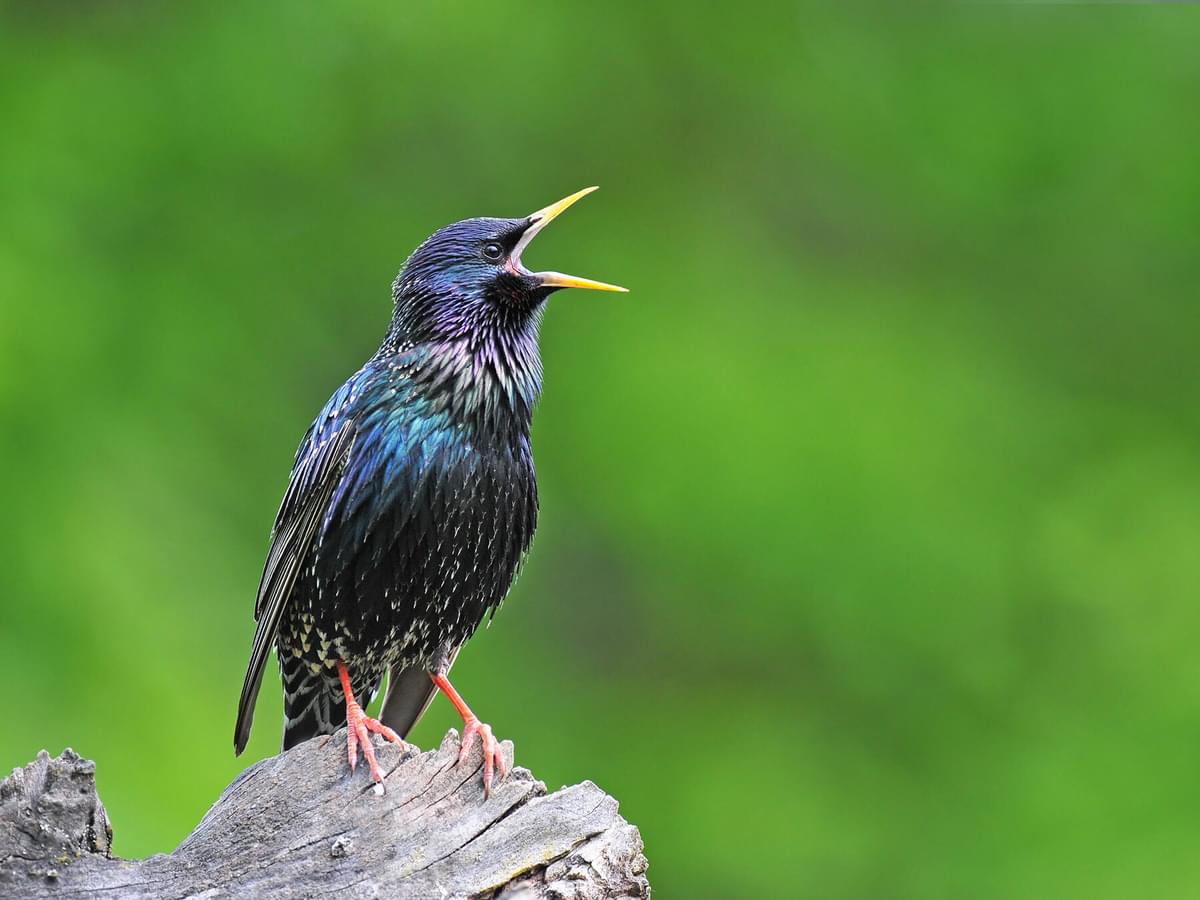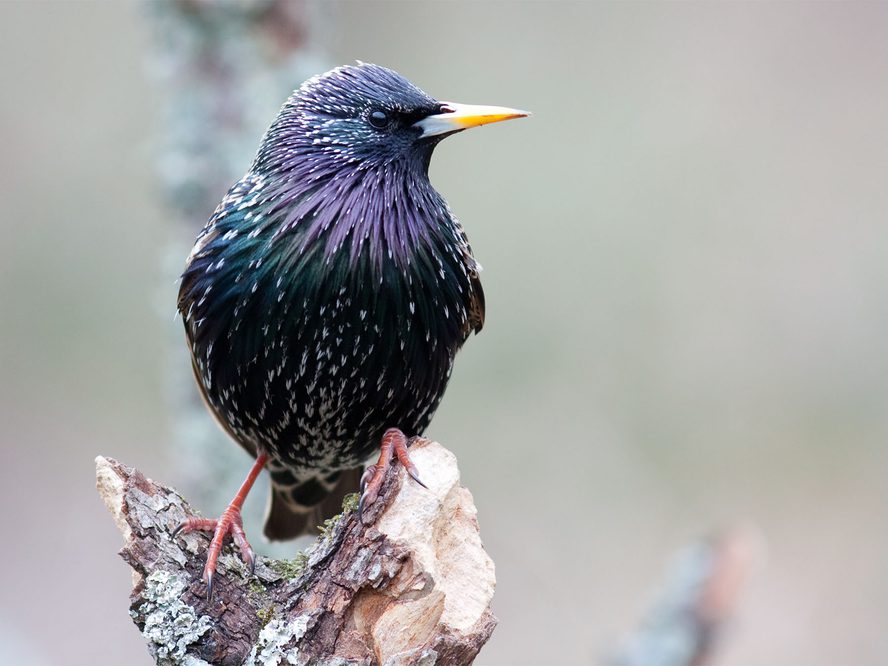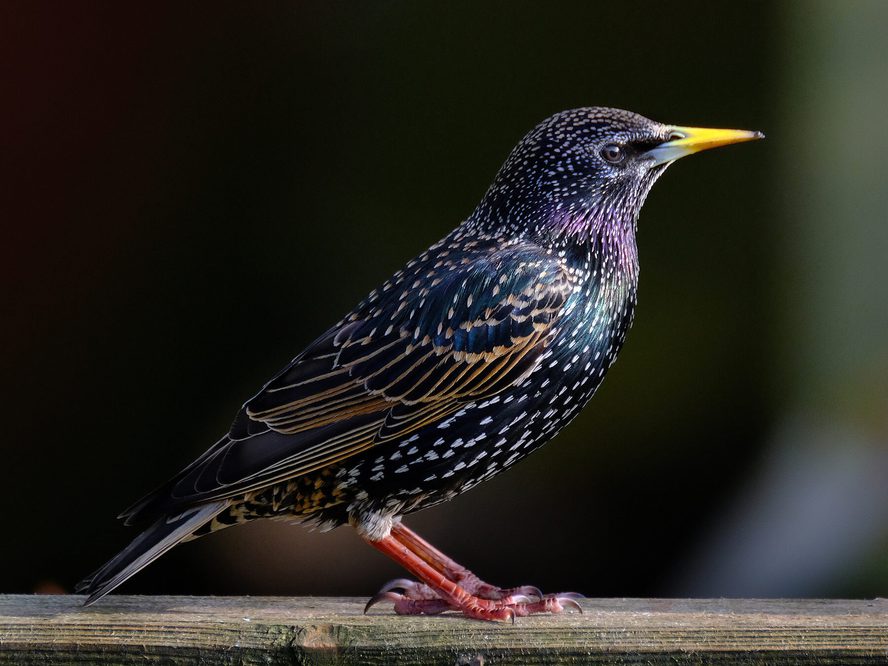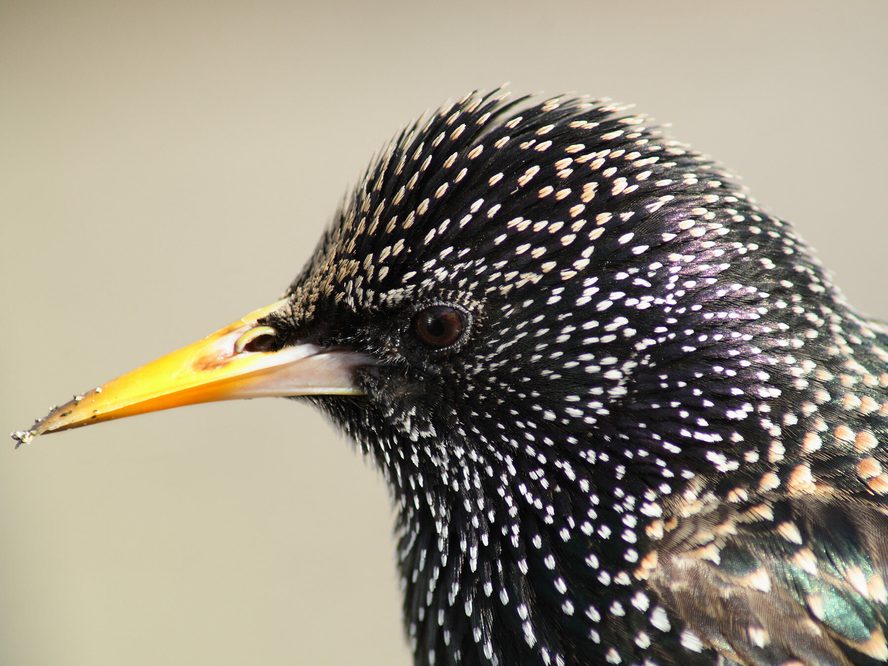Jump to Section
Do Starlings Migrate? (All You Need To Know)
Last updated: 18 May 2022

Spanning 35 genera and 123 species, the starling family, Sturnidae is one of the most diverse and widely distributed families of birds on the planet. Starlings live all across Europe, Africa and Asia, stretching all the way to India and Mongolia and the Pacific reaching Polynesia, Melanesia and Micronesia. Starlings are diverse and widely distributed, but do starlings migrate?
Due to the diversity of starling species, this is naturally quite a hard question to answer as it depends on the species of starling in question.
The northernmost species of starlings, such as the Common starling, a common sight here in the UK, are present as far north as the Arctic Circle in summer but tend to fly south towards central Europe, the Middle East, Mediterranean and Africa during winter. The Rosy starling is another strongly migratory species of starling. However, many starlings do not migrate at all. Starlings distributed further towards the equator do not migrate.
Many people are shocked by how diverse the starling family really is. Some species of starlings bear practically no resemblance to others, and whilst some are highly successful and widely distributed such as the Common or European starling, others are highly adapted to their niche environments and exist only in extremely limited numbers.
Read on to learn more about the migratory behaviours of starlings.

Common Starling perched on a fence
When do starlings migrate?
Starlings migrate towards the end of summer, typically around August or September. This is why starling murmurations begin around October - this is when the numbers of starling populations in the UK begin to swell from birds migrating from colder parts of Europe.
Some starlings will continue to migrate further down south, possibly settling in the Mediterranean, Middle East, Iberia and North Africa. It’s unclear why some populations of starlings migrate whereas some don’t, as presumably, there would be sufficient habitats for them to roost if they were to continue southerly from the UK.
However, once starlings do establish a roost, they are likely to return there year on year, hence why the UK is home to several famous starling roosting sites where you’re more likely to see a murmuration, e.g. Shapwick Heath in Somerset.

A large murmuration of Starlings
Where do starlings migrate?
European or Common starlings will typically migrate from their northernmost summer breeding grounds towards the UK and central Europe, the Mediterranean, Middle East, Iberia and North Africa. Common starlings are perfectly able to winter as far north as the UK, so it’s perhaps a case of where they prefer to stop rather than where they need to stop.
Common starlings in the US and Canada behave in the same way, heading south in winter, albeit not always particularly far.
Other species of starlings distributed further south already likely don’t migrate at all. Only the northernmost species of starlings need to migrate in the winter.

A small flock of Starlings in flight
How far do starlings migrate?
Starlings as far north as Russia and Scandinavia may head as far south as Iberia, North Africa, the Middle East and the Mediterranean. Most starlings do not migrate far, however, usually heading as short a distance as they can get away with. This is why many European or Common starlings dwelling in northernmost Europe end up in the UK.
Do all starlings migrate?
Whether or not a starling migrates or not depends largely on its location, as well as what particular species it belongs to. Starlings do prefer reasonable above or near-zero temperatures in winter, hence why starlings that winter in the UK pack themselves densely into their roosts.
Most starlings are sedentary, non-migratory birds that remain resident within their host countries. The European or Common starling is the main exception, as they may breed as far north as the Arctic Circle.
In the winter, migrating starlings may winter as far north as the UK, which is why UK winter starling populations are high. Many continue further south towards Africa and the Middle East. The UK is home to many resident Common starlings that both breed and winter here, not migrating at all.
There are other exceptions, such as the Rosy starling whose summer populations are increasing in the UK. Rosy starlings are strongly migratory and tend to winter in India and South Asia.
There are 123 species of starlings, however, and the vast majority are sedentary and non-migratory.
Common starlings in North America are similar and tend to migrate only as far south as they need to remain sufficiently warm for the winter.

Rosy Starlings are becoming more popular in the UK during summer
Where do starling birds go in the winter?
Starlings enter their roosts during the winter. Roosts are safe habitats where birds can ‘bed down’ for the cold weather, often huddling to preserve body heat in numbers.
Starlings are known for their communal roosting behaviours - a Common starling roost can be home to hundreds of thousands of birds. Up to 500 birds can pack themselves into just one cubic meter! Winter in the UK is when you’re most likely to see a starling murmuration, a swirling mass of many thousands of birds. They take place from October until around March at the very latest.
Typical roosting sites include dense forests, reed beds and manmade structures, the most iconic being the ruined Brighton West pier.

A roost of European Starlings during the winter
Do starlings migrate from the UK?
Most Common starlings in the UK are resident birds, and thus, they do not migrate and roost here for the winter. However, some are immigrants, meaning they’ve migrated to the UK from further north, typically Scandinavia or Russia.
Some will continue to head south, possibly all the way to the Mediterranean or North Africa, but it’s generally understood that only starlings from northeastern Europe tend to head this far south. Most do not migrate from the UK. The migratory behaviours of Common starlings are quite sporadic and when they do migrate, they tend to only migrate partially.

Close up portrait of a Common Starling
Do starlings migrate from Canada?
Common starlings were purposefully introduced to North America in the 18th century - they are not natives.
Common starlings in North America and Canada do indeed migrate further south during the winter, but generally do not reach the most southerly American states.
Do starlings migrate to Africa?
There are many native starling species in Africa, but some populations of Common or European starlings, as well as small numbers of Rosy starlings, will winter in parts of Africa.









